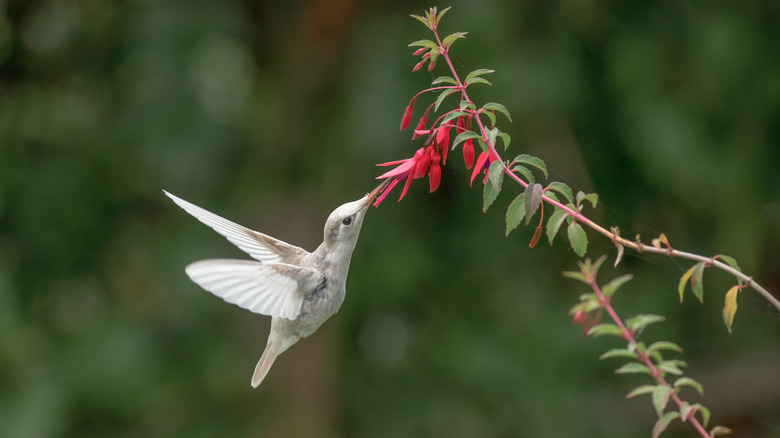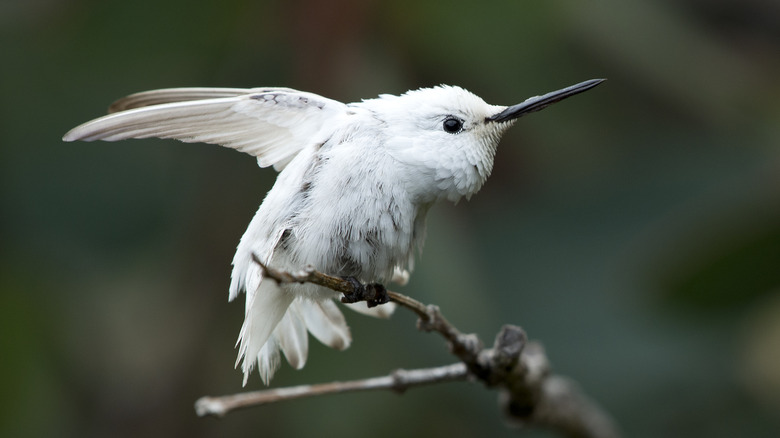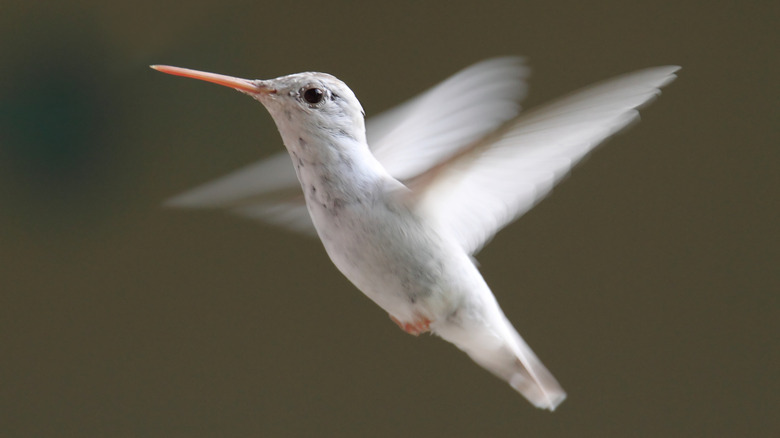Why It Is Rare To See A White Hummingbird Fluttering In Your Garden
One of the first things we picture when we think of hummingbirds is the flash of color on their chests and wings. So, a white hummingbird will certainly catch attention when it's in the neighborhood. There just aren't many of them around. A hummingbird sporting a full coat of white feathers is due to an abnormality that affects very few birds. Even people who have spent years scanning the skies with binoculars are thrilled to find a stark white one. Former biology professor and life-long birder Todd Newberry has only seen one throughout the seven decades he's practiced this hobby.
White hummingbirds don't have pigment in their feathers and are considered albinistic or leucistic. One estimate suggests that only one in every 30,000 birds falls into these categories, and unfortunately, a shorter lifespan comes with their white plumage. Even if you transform your yard into a hummingbird haven, there's a minute chance of you ever seeing a white one. If you happen to spot a white hummingbird, nature has offered you a gift not given to many.
What are albinistic and leucistic hummingbirds?
You probably know that albinism can result in an animal being completely white. However, "leucistic" isn't a word the layperson throws around too often. So what's the difference? Albino birds have fully white plumage and pink beaks, eyes, and feet, but leucistic ones are white with black beaks, eyes, and feet. Leucistic birds may also have patches of other colors on their feathers. Albinistic birds can't produce the melanin that lends color to feathers and skin. While leucistic birds can produce melanin, it just doesn't fully work its way to their feathers.
Albinistic and leucistic birds are often grouped together when it comes to statistics, but leucistic birds way outnumber the albinos among them. Avian Report analyzed data from Project FeederWatch led by the Cornell Lab of Ornithology. They found that over three-quarters of the combined group are leucistic. Experts think that as few as 0.5% of all birds are albinistic.
The strength of colorful feathers
White is a curiously unpopular color with birds. Glaring white porches and garage doors have been known to keep birds away, and white flowers can be a disadvantage in your garden if you're trying to attract birds. Their lack of pigmentation is naturally rare, but it also contributes to shorter lives for the ones that are born with this condition.
Albinistic and leucistic birds are not as hardy as other birds; they are often targeted by predators, perhaps because their lack of color doesn't provide them with camouflage. For albino and leucistic birds, the lack of melanin makes their feathers not as strong or insulative against temperature extremes. Albino hummingbirds rarely make it to adulthood or even past the fledgling stage, which is a major player in why we so rarely see them. If your interest is piqued, find a good spot for your hummingbird feeder, and watch out this season for a white bird.


